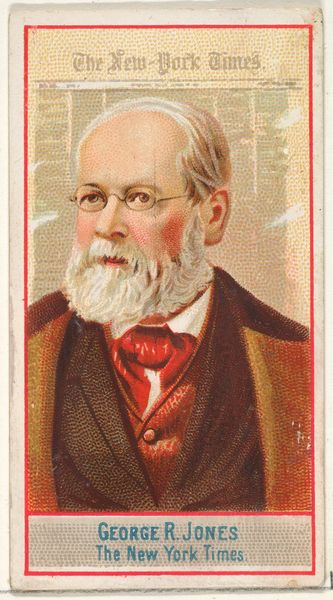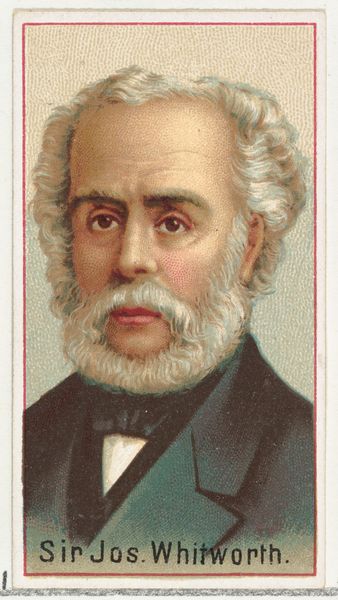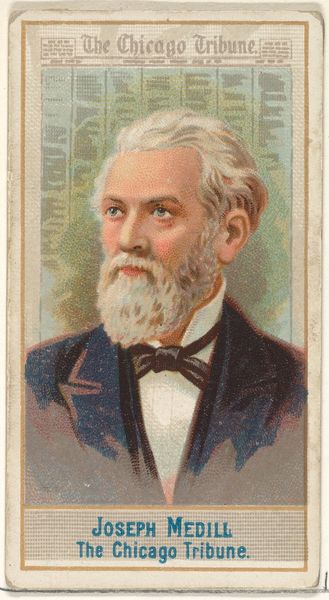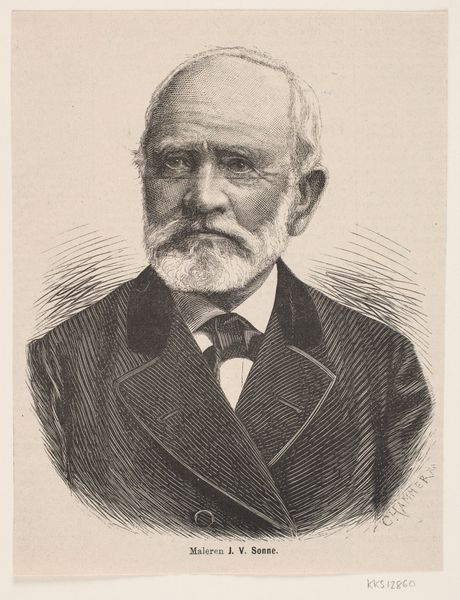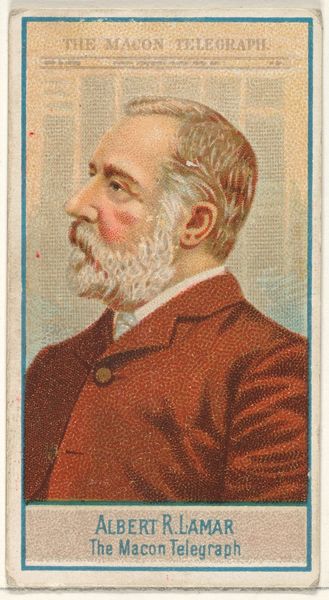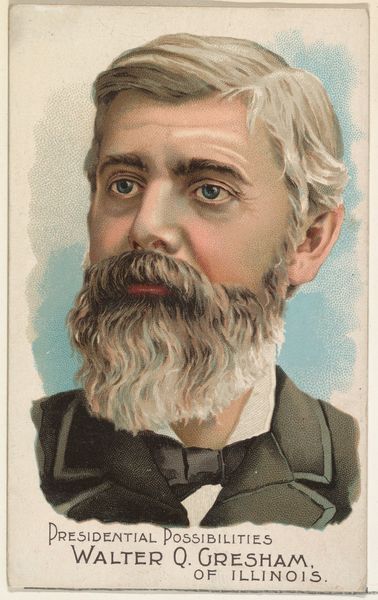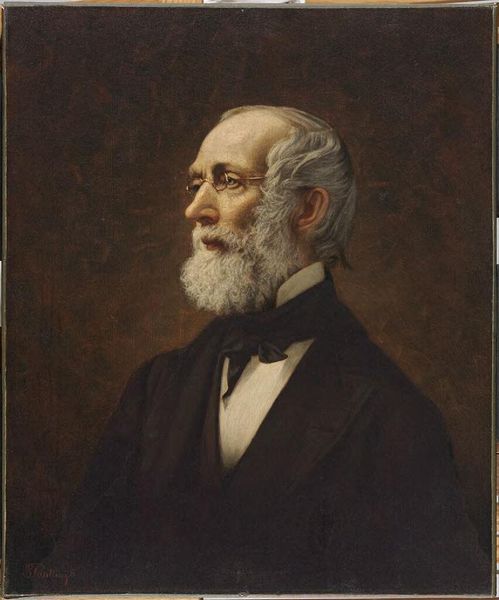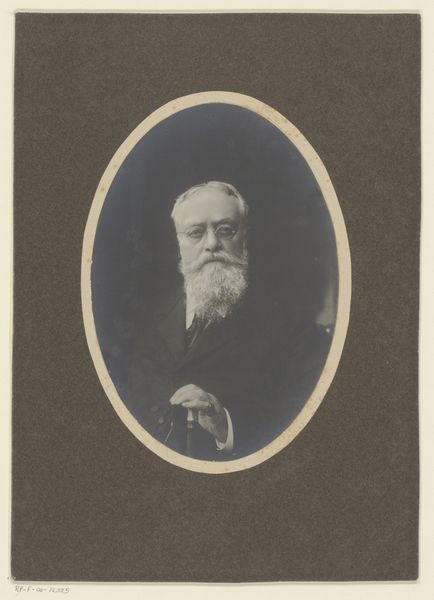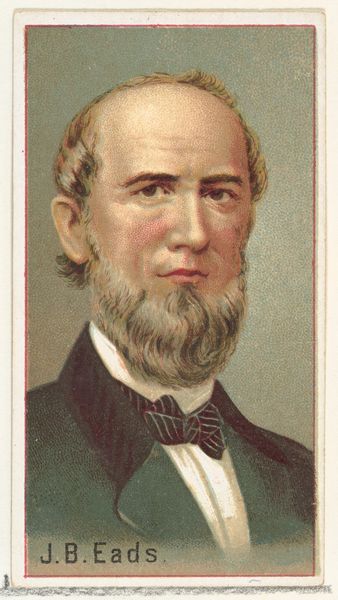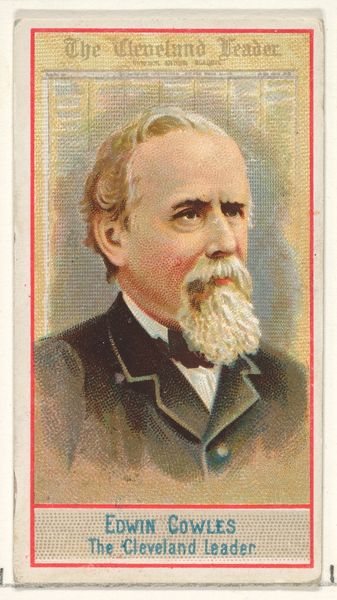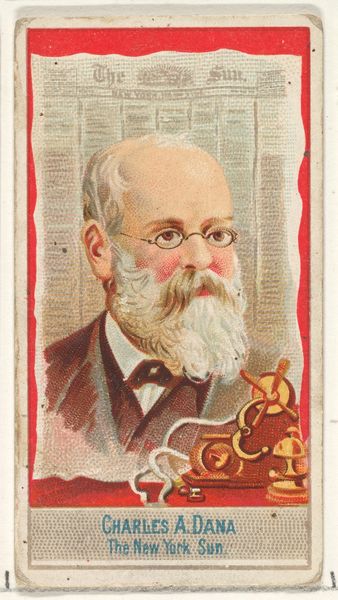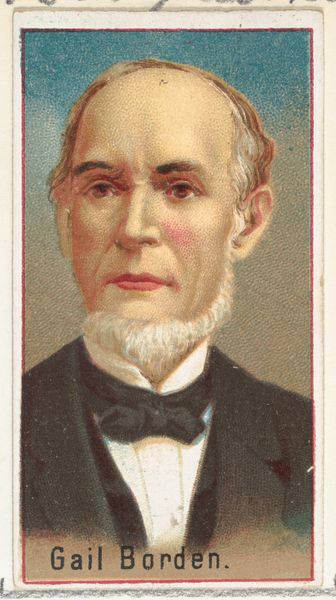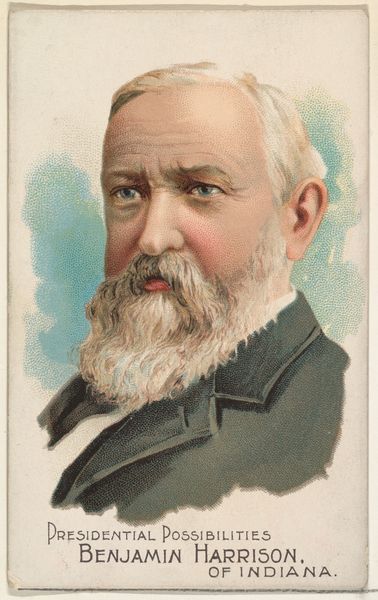
Alfred Krupp, printer's sample for the World's Inventors souvenir album (A25) for Allen & Ginter Cigarettes 1888
0:00
0:00
drawing, print
#
portrait
#
drawing
# print
#
genre-painting
Dimensions: Sheet: 2 3/4 x 1 1/2 in. (7 x 3.8 cm)
Copyright: Public Domain
Editor: This is Alfred Krupp, from an 1888 printer's sample for the World's Inventors souvenir album by Allen & Ginter Cigarettes. It’s a print and drawing combination, very small in scale. It strikes me as almost…propagandistic, presenting this powerful industrialist in such a dignified way. How should we interpret the cultural significance of something like this? Curator: It’s fascinating to see how powerful figures were commodified and circulated through everyday items. This card, included in cigarette packs, was essentially branding, wasn't it? What kind of message was Allen & Ginter sending to their consumers by associating their product with inventors and industrialists like Krupp? Editor: Maybe associating smoking with ingenuity, or success? Is that why this is considered genre painting, showing aspects of daily life and aspirations of the time? Curator: Exactly. Genre painting, even in this miniature form, often reflects and reinforces societal values. Krupp represented industrial progress, wealth, and perhaps even a certain national pride. The portrait’s style, the lighting, the pose – all contribute to an image of respectability. How might the average smoker in 1888 have viewed this card? Did it inspire them, perhaps make them feel more connected to the era's technological advancements? Editor: That makes sense. It’s easy to forget these images were consumed in such a different context than we view them now. So much cultural context in such a small card. Curator: Precisely. And considering Krupp’s legacy—manufacturing weapons—the seemingly innocent portrait becomes politically loaded. The museum context transforms it again; it’s no longer promotional material but an artifact ripe for analysis of power, industry, and historical memory. Editor: That’s given me a lot to think about regarding the cultural implications and intent behind these smaller artworks. Curator: Me too, it's vital that we remember art history and that this object's public role keeps shifting with time.
Comments
No comments
Be the first to comment and join the conversation on the ultimate creative platform.
